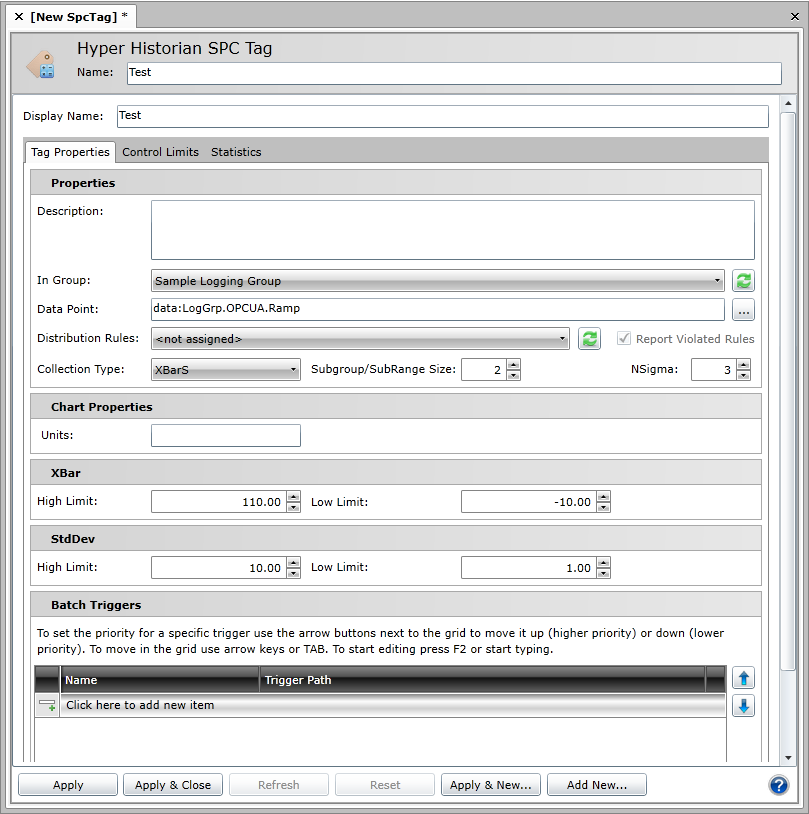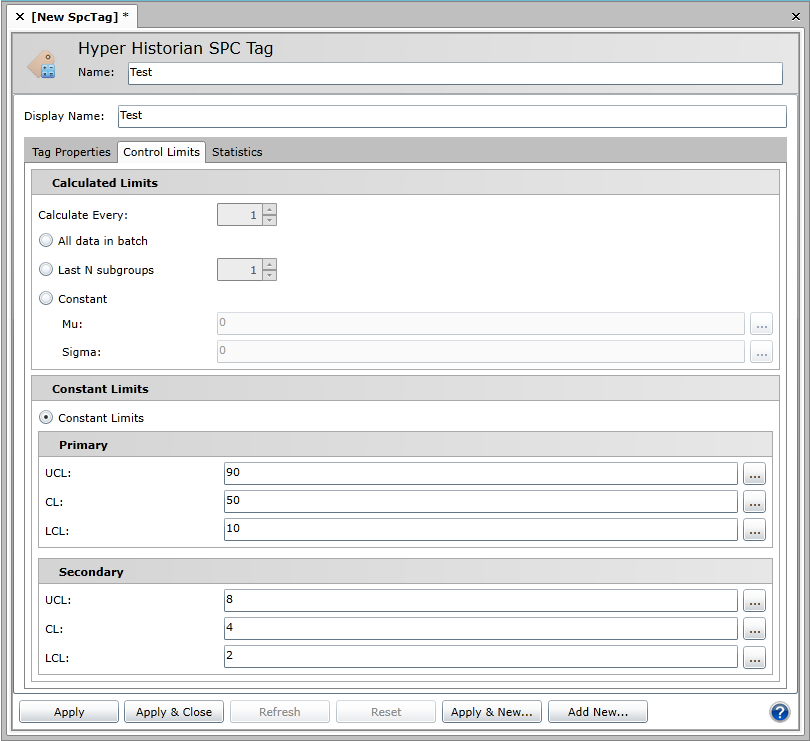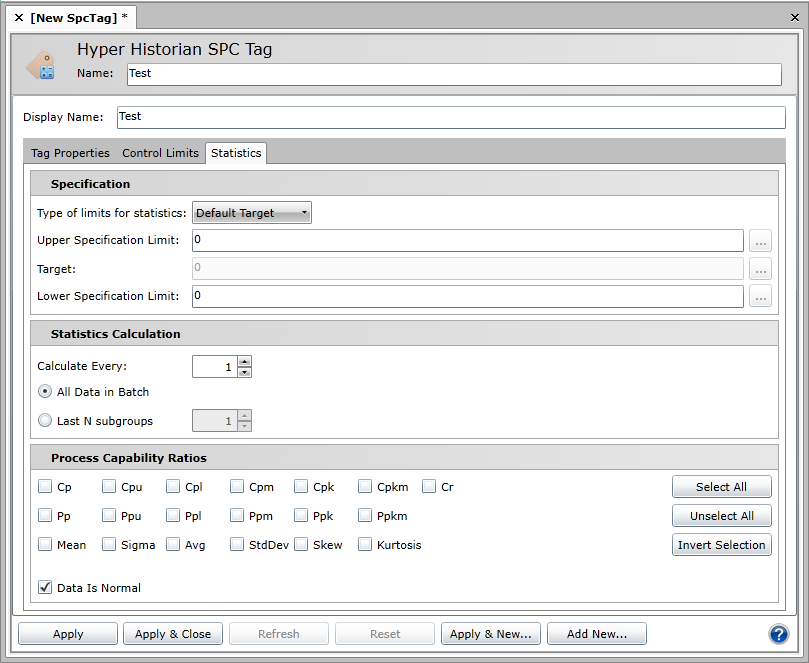|
|
The features on this page require a GENESIS64 Advanced license and are not available with GENESIS64 Basic SCADA . |
|
|
The features on this page require a GENESIS64 Advanced license and are not available with GENESIS64 Basic SCADA . |
This topic provides you with the information you need to configure and view an SPC data configuration quickly using Quality AnalytiX. While the steps below cover most of the features available in the product, they do not provide in-depth descriptions. To view more information about a specific aspect in Quality AnalytiX, view the links provided in each of the steps below.
Because it takes several steps to define and view SPC data, this quick start guide contains several sections. Read the sections that are most relevant to you.
To Configure and View a Basic Process Quality Configuration for Quality AnalytiX:
(Required) Configure your SPC tags in the Quality AnalytiX provider in the Workbench.
(Optional) Set up an SPC plot in TrendWorX64 Viewer to show how your configured SPC tags and associated values change over time. You can also view alarm notifications and operator comments associated with your SPC data in this type of plot.
(Optional) Generate reports for viewing sample calculations, group calculations, and alarm calculations associated with your SPC tags.
(Optional) Create a dashboard to display your SPC tags.
Within the Quality AnalytiX provider in the Workbench, open an active Hyper Historian database and double-click on the SPC Distribution Rules node. The default set of rule sets in Quality AnalytiX will appear in the right-side pane of the Workbench. Each rule set defines the tendencies your SPC tag values should or should not follow. For more information about creating or editing SPC distribution rule sets, see the SPC Distribution Rule Sets topic.
In the Data Collections node, create a new folder called SPC. Once you have created this folder, right-click on it and select the + SPC Tag option to create a new SPC tag. The SPC Tag Configuration Dialog appears, and the project explorer contains the SPC folder. Your new tag will now appear in the right-side pane of the Workbench, as shown below:
New SPC Folder and Tag

In the SPC Tag Configuration Dialog, configure the tag using the following options. For more details about the tabs found in this dialog, see the SPC Tag Configuration Dialog topic.
Give the tag a Name of Test.
In the "Properties" tab of the dialog, assign the following Data Point to this SPC tag: data:LogGrp.OPCUA.Ramp.
Select a set of Distribution Rules (such as Basic) for this SPC tag to follow.
Select a Collection Type of XBarS to summarize the sample values that this SPC tag measures.
In the Chart Properties area of the tab, set the limits of the XBar summary statistic to 110.00 (for a High11 Limit) and -10.00 (for a Low Limit). Similarly, set the limits of the StdDev summary statistic to 10.00 (for a Hi Limit) and 1.00 (for a Lo Limit).
Hyper Historian SPC Tag - Tag Properties Tab

Move to the "Control Limits" tab of the dialog. In the Constant Limits area of the tab, set the Primary values to 90 for UCL, 50 for CL, and 10 for LCL. Set the Secondary values to 8 for UCL, 4 for CL, and 2 for LCL. The following image shows the completed configuration on this tab.
Hyper Historian SPC Tag - Control Limits Tab

Move to the "Statistics" tab of the dialog. In the Process Capability Ratios area of the tab (near the right-hand edge), enable the check boxes next to Cp, Pp, Mean, Sigma, Avg, and StdDev.
Hyper Historian SPC Tag - Statistics Tab

Click Apply to save the changes you have made to this SPC tag.
Make sure that the Services traffic light that appears in the Home ribbon is green before continuing.
For information about generating reports, see the Quality AnalytiX Reports topic.
You can create dashboard displays that provide holistic summaries of your SPC information. This visual overview allows you to identify the elements of your process that are affecting its capability and performance. An example appears below:
Sample SPC Dashboard

For information about creating dashboards, see the Creating Dashboards for Quality AnalytiX topic.
See also: